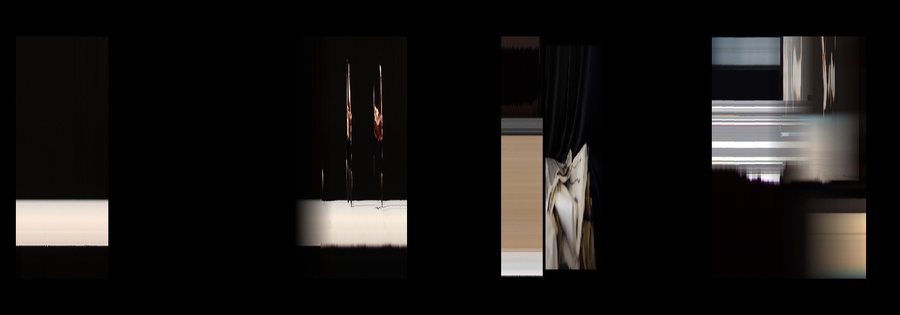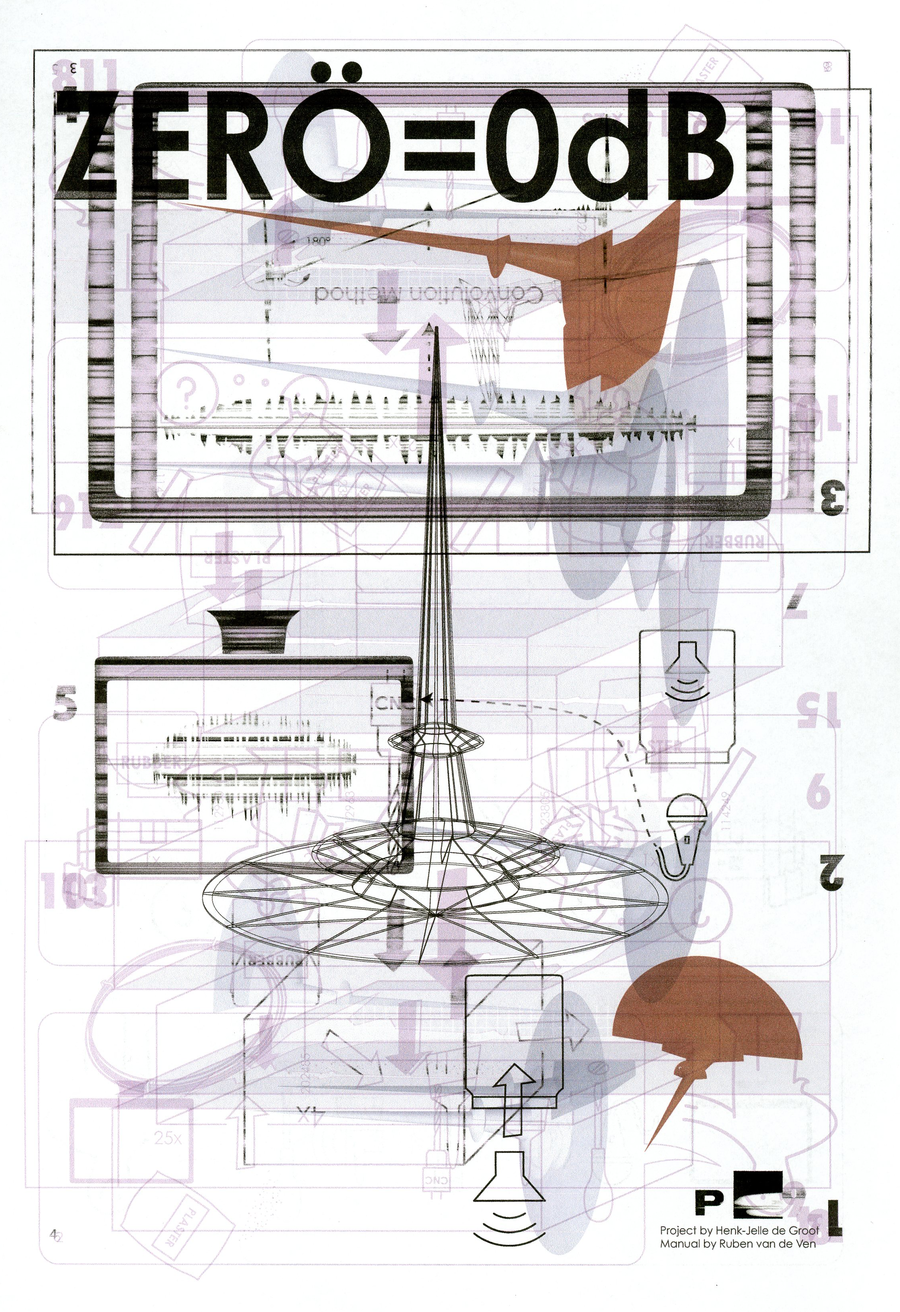User:SN/Documentation Failure: Difference between revisions
No edit summary |
No edit summary |
||
| (2 intermediate revisions by the same user not shown) | |||
| Line 1: | Line 1: | ||
<div style='width: | <div style='width:1000px;'> | ||
In my previous works, I was played with specificities of different media, transformed and applied one on another to reveal distortion, to create a situation in which error could emerge. In my works media always goes alongside with errors, when a crack in the code generates new data, which causes distortion. As, an example, In Untitled the error becomes a part of the project, coauthor, yet unpredictable. The response of the system has some | In my previous works, I was played with specificities of different media, transformed and applied one on another to reveal distortion, to create a situation in which error could emerge. In my works media always goes alongside with errors, when a crack in the code generates new data, which causes distortion. As, an example, In Untitled the error becomes a part of the project, coauthor, yet unpredictable. The response of the system has some levels of freedom, which are defined by the set of restraints and protocol but the error (from my perspective), is not defined. So, therefore the error is unique. In the Documentation failure series, the error becomes the main character and the project is built the way to create conditions for error to emerge. | ||
As an exercise for the Thematic project, we were asked to create An E-book that | As an exercise for the Thematic project, we were asked to create An E-book that concatenates previous records of graduation projects. As much as we tried to archive it and make it readable, the more errors and distortion appeared, so we tried to highlight the distortion that comes together with the archiving processes. Documentation of documentation of a document buries the original object under the layers of the specificities of the documentation prosess and its media attributes. Being focused on the process of documentation, we decided to pick scanning as a method and general strategy to work with content. Scanning as a process is very fragmented yet systematic with the aim of creating the exact copy of the object. But when you are scanning the scanner has no idea of the whole, the image is that of the fragmented images. We implemented scanning as a conception on different types of documentation objects. | ||
I was working on “scanning” documents. This process brings to the surface and | I was working on “scanning” documents. This process brings to the surface and exaggerates all kinds of errors caused by machine malfunction and human factors. These errors reveal new aesthetics and produce unforeseen results. I find the outcomes beautiful and interesting. So my work does not look for the perfectibility of technology, it is interested in the beauty produced by its failure. They are all about this attempt to make visible various non-narrative elements: errors, distortion, malfunctions or the code, program, machine. Some of the techniques I used are scanning video, voise recognition tools for interview transcription. | ||
[[File:2014_Art_of_Archiving_Roel_Abbing_seen_by_Lidia_Pereira.png| | [[File:2014_Art_of_Archiving_Roel_Abbing_seen_by_Lidia_Pereira.png|900px]] | ||
[[File:2015_Benjamin_Li_documented_Mihail_Bakalov.png| | [[File:2015_Benjamin_Li_documented_Mihail_Bakalov.png|900px]] | ||
[[File:2015_Cristina_Cochior_documented_Lídia_Rodrigues.png| | [[File:2015_Cristina_Cochior_documented_Lídia_Rodrigues.png|900px]] | ||
[[File:2015_Thomas_Walskaar_documented_Max_Dovey.png| | [[File:2015_Thomas_Walskaar_documented_Max_Dovey.png|900px]] | ||
[[File:2014_Artyom_Kocharyan_seen_by_michaela_lakova.png| | [[File:2014_Artyom_Kocharyan_seen_by_michaela_lakova.png|900px]] | ||
[[File:2014_Art_of_Archiving_Nan_Wang_seen_by_Mihail_Bakalova.png| | [[File:2014_Art_of_Archiving_Nan_Wang_seen_by_Mihail_Bakalova.png|900px]] | ||
[[File:2014_Art_of_Archiving_Marlon_Harder_seen_by_Lucia_Dossin.png| | [[File:2014_Art_of_Archiving_Marlon_Harder_seen_by_Lucia_Dossin.png|900px]] | ||
[[File:2015_Arantxa_Gonlag_documented_Junyu_Chen.png| | [[File:2015_Arantxa_Gonlag_documented_Junyu_Chen.png|900px]] | ||
[[File:2015_Manetta_Berends_documented_Nikos_Vogiatzis.png| | [[File:2015_Manetta_Berends_documented_Nikos_Vogiatzis.png|900px]] | ||
[[File:2015_R.vdVen_documented_H-J.dGroot.png| | [[File:2015_R.vdVen_documented_H-J.dGroot.png|900px]] | ||
[[File:2015_Anne_Lamb_documented_Elleke_Hageman.png| | [[File:2015_Anne_Lamb_documented_Elleke_Hageman.png|900px]] | ||
</div> | </div> | ||
Latest revision as of 14:26, 12 June 2017
In my previous works, I was played with specificities of different media, transformed and applied one on another to reveal distortion, to create a situation in which error could emerge. In my works media always goes alongside with errors, when a crack in the code generates new data, which causes distortion. As, an example, In Untitled the error becomes a part of the project, coauthor, yet unpredictable. The response of the system has some levels of freedom, which are defined by the set of restraints and protocol but the error (from my perspective), is not defined. So, therefore the error is unique. In the Documentation failure series, the error becomes the main character and the project is built the way to create conditions for error to emerge.
As an exercise for the Thematic project, we were asked to create An E-book that concatenates previous records of graduation projects. As much as we tried to archive it and make it readable, the more errors and distortion appeared, so we tried to highlight the distortion that comes together with the archiving processes. Documentation of documentation of a document buries the original object under the layers of the specificities of the documentation prosess and its media attributes. Being focused on the process of documentation, we decided to pick scanning as a method and general strategy to work with content. Scanning as a process is very fragmented yet systematic with the aim of creating the exact copy of the object. But when you are scanning the scanner has no idea of the whole, the image is that of the fragmented images. We implemented scanning as a conception on different types of documentation objects.
I was working on “scanning” documents. This process brings to the surface and exaggerates all kinds of errors caused by machine malfunction and human factors. These errors reveal new aesthetics and produce unforeseen results. I find the outcomes beautiful and interesting. So my work does not look for the perfectibility of technology, it is interested in the beauty produced by its failure. They are all about this attempt to make visible various non-narrative elements: errors, distortion, malfunctions or the code, program, machine. Some of the techniques I used are scanning video, voise recognition tools for interview transcription.











